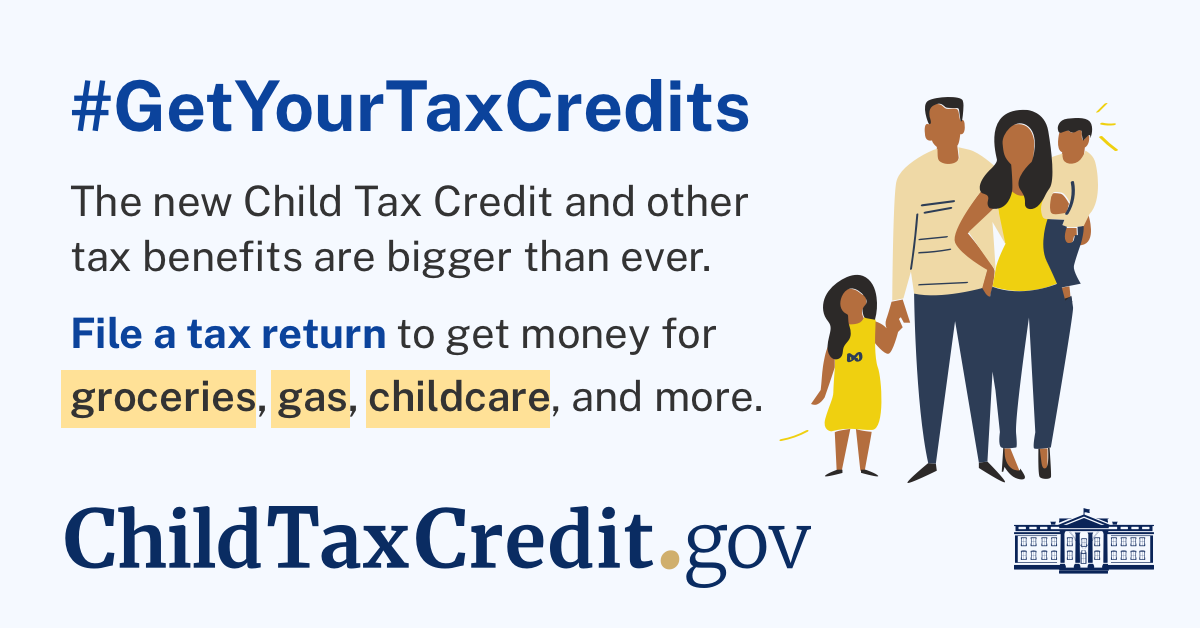
It Takes a Village: Supporting equitable access to the Child Tax Credit
Post filed in: Technology Transformation Services
When President Biden signed the American Rescue Plan into law just one year ago, he increased the Child Tax Credit from $2,000 to $3,000 per child for children over the age of six, and from $2,000 to $3,600 for children under the age of six. ARP also raised the age to include 17-year-old teens for the $3,000 tax credit.
The Administration’s goal was to get more of these advanced payments into households quickly. Previously, eligible parents had to wait for their tax refunds to receive the credit as a lump sum.
This was good news for millions of children who were set to benefit from this change. For the parents, it was practically seamless for those who filed for the credit in prior tax years. Their information was already on file, so advanced monthly payment distribution was not a heavy lift.
But for some it was a heavy lift: those taxpayers who hadn’t filed previously for the tax credit and those who hadn’t met the criteria before. Some parents were ineligible in the past, and some of those parents were not required to file a tax return.
The government was responsible for:
- communicating the tax credit changes to households with children;
- notifying parents that they could be eligible for the tax credit;
- explaining to eligible parents how to enroll to receive the advanced payments; and
- sharing important information for the 2021 tax season so the parents could receive the full credit.
Solution
The ARP allocated $150 million to the Federal Citizen Services Fund. With these funds, the General Services Administration is investing in transforming digital services to make them work better for the people they serve.
Using some of these ARP funds, GSA’s Technology Transformation Services team partnered with the U.S. Department of Treasury and U.S. Digital Services to build an outreach and implementation strategy for the expanded tax credit.
This collaboration gave agencies the ability to distribute a variety of Child Tax Credit resources across multiple communications channels. As a result, more people had access to important information.
This outreach and implementation initiative made sure the right message was shared at the right time to the right audience – eligible parents. The teams met with community groups and over 10 federal agencies on how to reach families that previously did not file for the benefit.
Resources
After the team determined how to reach eligible households, they designed resources to communicate the Child Tax Credit changes to a diverse population of families and community partners.
As a complement to the ongoing digital efforts, TTS supported:
- Creating multilingual social media content for organizations and agencies to provide clear, concise, and consistent information to the public;
- distributing back-to-school outreach toolkits in English and Español to amplify awareness of the program across multiple channels; and
- publishing a comprehensive and regularly updated list of frequently asked questions for ongoing guidance.
Impact
Working across government with our partners at the USDT and USDS, and within our communities, families could access trusted and consistent guidance across multiple channels to increase awareness and drive enrollment. By using the network of community groups and government agencies that work with and serve eligible families, the program reached over 5,000 ambassadors (such as call center employees) capable of promoting the expanded tax credit; including agencies working with indigenous communities. As a result, the advanced payments of the Child Tax Credit supported more than 61 million children in December 2021 and cut monthly child poverty by 30 percent.
This initiative was complemented by the suite of TTS shared services. Be sure to subscribe to receive new GSA blog alerts. Soon, you can read more details on the internal collaboration efforts from TTS.

 U.S. General Services Administration
U.S. General Services Administration
